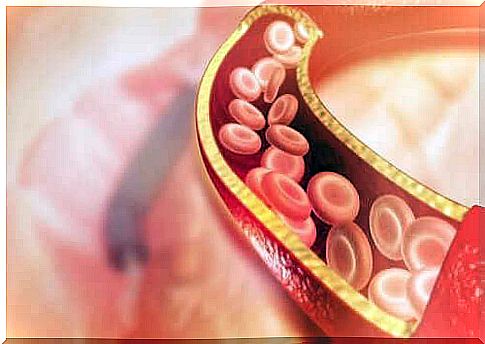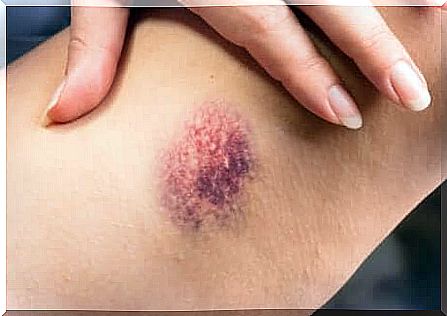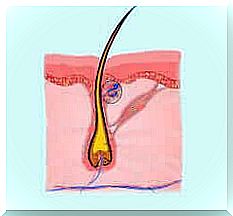Superficial Thrombophlebitis: Definition And Causes

Prolonged inactivity, such as that which occurs following trauma or surgery, can promote the appearance of clots that prevent blood flow from flowing normally. This situation can lead to the onset of the phenomenon known as superficial or deep thrombophlebitis.
This disorder affects our health and, consequently, our quality of life. We talk about it in detail in the following lines.
What is thrombophlebitis?

Thrombophlebitis is an inflammatory process due to the formation of a blood clot, or thrombus, inside a vein; the blood flow is therefore obstructed. In most cases it affects the legs and lower extremities. Depending on the affected vein, thrombophlebitis can be of two types:
- Deep
- Superficial
Deep thrombophlebitis occurs in the deep venous system, which supplies muscles and tissues, and can cause very serious complications, including pulmonary embolism.
Superficial thrombophlebitis, on the other hand, mainly affects the great saphenous vein, or the large superficial vein present in the thigh and leg. It presents as a limiting and relatively benign disease but can escalate into deep vein thrombosis and other complications.
Although the exact incidence of superficial thrombosis is not known, it is thought to be higher than that of deep vein thrombophlebitis, affecting approximately 1 in 1,000 people.
Types of superficial thrombophlebitis
- Sterile superficial thrombosis. It is the most widespread.
- Superficial traumatic thrombophlebitis. It occurs following an injury to the extremity and is usually associated with the appearance of large bruises on adjacent tissue
- Infectious thrombophlebitis. It is often the consequence of prolonged intravenous cannulation.
- Migrant thrombophlebitis. It is a recurrent superficial thrombophlebitis with no identifiable cause. It is associated with more serious diseases, such as pancreatic cancer.
Symptoms associated with superficial vein thrombosis

Diagnosis of the disorder is based on the appearance of the following symptoms:
- Localized pain
- Erythema
- itch
- Sensitivity
- Skin redness
- Hardening of the adjacent tissue
What are the causes of superficial thrombophlebitis?
Superficial thrombophlebitis shares numerous etiological factors with other thrombotic changes. Among the various risk factors, the most important and clinically identifiable is the presence of varicose veins. Additional causes often associated with the onset of thrombophlebitis are:
- Immobility or prolonged inactivity
- State of hypercoagulability or thrombophilia
- Previous episodes of superficial thrombophlebitis
- Long journeys
- Surgical interventions
- Pregnancy
- Estrogen-dependent hormone therapy
- Overweight or obesity
What treatment to follow?
Treatment is mainly aimed at reducing pain and inflammation and, above all, at preventing the development of deep vein thrombophlebitis. The risk of progression to venous thromboembolism is approximately 5%.
Those who have thrombus above the knee, in other words near the sapheno-femoral junction, or clots greater than 5 cm are considered prone to thromboembolic complications.
Treatment is based on taking non-steroidal anti-inflammatory drugs (NSAIDs) to relieve localized pain, such as ibuprofen or naproxen. In more serious contexts or if risk factors are present, the use of low molecular weight anticoagulants, such as some heparins, also seems to be indicated.
These molecules are widely prescribed following surgery as a preventative measure against clot formation.
How to prevent superficial thrombophlebitis?
The risk of thrombophlebitis increases in case of prolonged inactivity over time. This situation can be caused by a long journey or surgery, or it can arise as a result of a disease, such as obesity. In order to prevent a blood clot from forming, we can:
- To walk
- Move your legs regularly
- Wear comfortable clothes
- Drink enough fluids
Today we have considerable medical knowledge regarding superficial venous thrombosis, which has changed the scenario for the diagnosis and treatment of this disease. Until about ten years ago, it was considered a banal pathology and of simple diagnosis, for which a precise treatment had not even been defined.
Today, however, it is classified as a potentially serious pathology, because it is associated on numerous occasions with thrombosis of the deep venous system and the fatal consequences that derive from the latter, such as pulmonary embolism.









